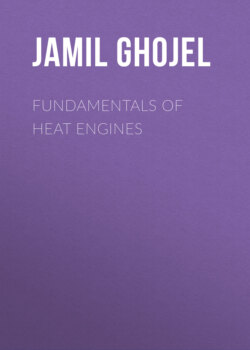Читать книгу Fundamentals of Heat Engines - Jamil Ghojel - Страница 11
Preface
ОглавлениеThe reciprocating piston engine and the gas turbine engine are two of the most vital and widely used internal combustion heat engines ever invented. Piston engines are still dominant in the areas of land and marine transportation, mining, and agricultural industries. They also play a significant role in light aircraft and stand‐by power‐generation applications. Power that can be generated by piston engines ranges from a fraction of a kilowatt to more than 80 MW, with thermal efficiencies approaching 50%. Gas turbines are dominant in civil and military aviation and play a major role in base, midrange, and peak load electric power generation ranging from small stand‐by units up to 300 MW per engine with thermal efficiencies approaching 40% at the upper range and 500 MW in combined cycle configurations with thermal efficiencies approaching 60%. Gas turbines are also ideal as power plants operating in conjunction with large renewable power plants to eliminate intermittency.
Demand for power and mobility in its different forms will continue to increase in the twenty‐first century as hundreds of millions of people in the developing world become more affluent, and the cheapest and most efficient means of satisfying this demand will continue to be the heat engine. As a consequence, the heat engine will most likely remain an active area of research and development and engineering education for the foreseeable future. Traditionally, the piston engine has been an ideal tool for teaching mechanical engineering, as it features fundamental principles of the engineering sciences such as thermodynamics, engineering mechanics, fluid mechanics, chemistry (more specifically, thermochemistry), etc. In this book, gas turbine engine theory, which is based on the same engineering principles, is combined with piston engine theory to form a single comprehensive tool for teaching mechanical, aerospace, and automotive engineering in entry‐ and advanced‐level undergraduate courses and entry‐level energy‐related postgraduate courses. Practicing engineers in industry may also find some of the material in the book beneficial.
The book comprises 3 parts, 15 chapters, and 4 appendices. The first chapter in Part I is a review of some principles of engineering science, and the second chapter covers a wide range of thermochemistry topics. The contribution of engineering science to heat engine theory is fundamental and is manifested over the entire energy‐conversion chain, as this figure shows.
Part II covers theoretical aspects of the reciprocating piston engine starting with simple air‐standard cycles, followed by theoretical cycles of forced induction engines and ending with more realistic cycles that can be used to predict engine performance as a first approximation. Part III on gas turbines also covers cycles with gradually increasing complexity, ending with realistic engine design‐point and off‐design calculation methods.
Representative problems are given at the end of each chapter, and a detailed example of piston‐engine design‐point calculations is given in Appendix C. Also, case studies of design‐point calculations of gas turbine engines are provided in Chapters 12 and 13.
The book can be adopted for mechanical, aerospace, and automotive engineering courses at different levels using selected material from different chapters at the discretion of instructors.
Jamil Ghojel
